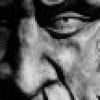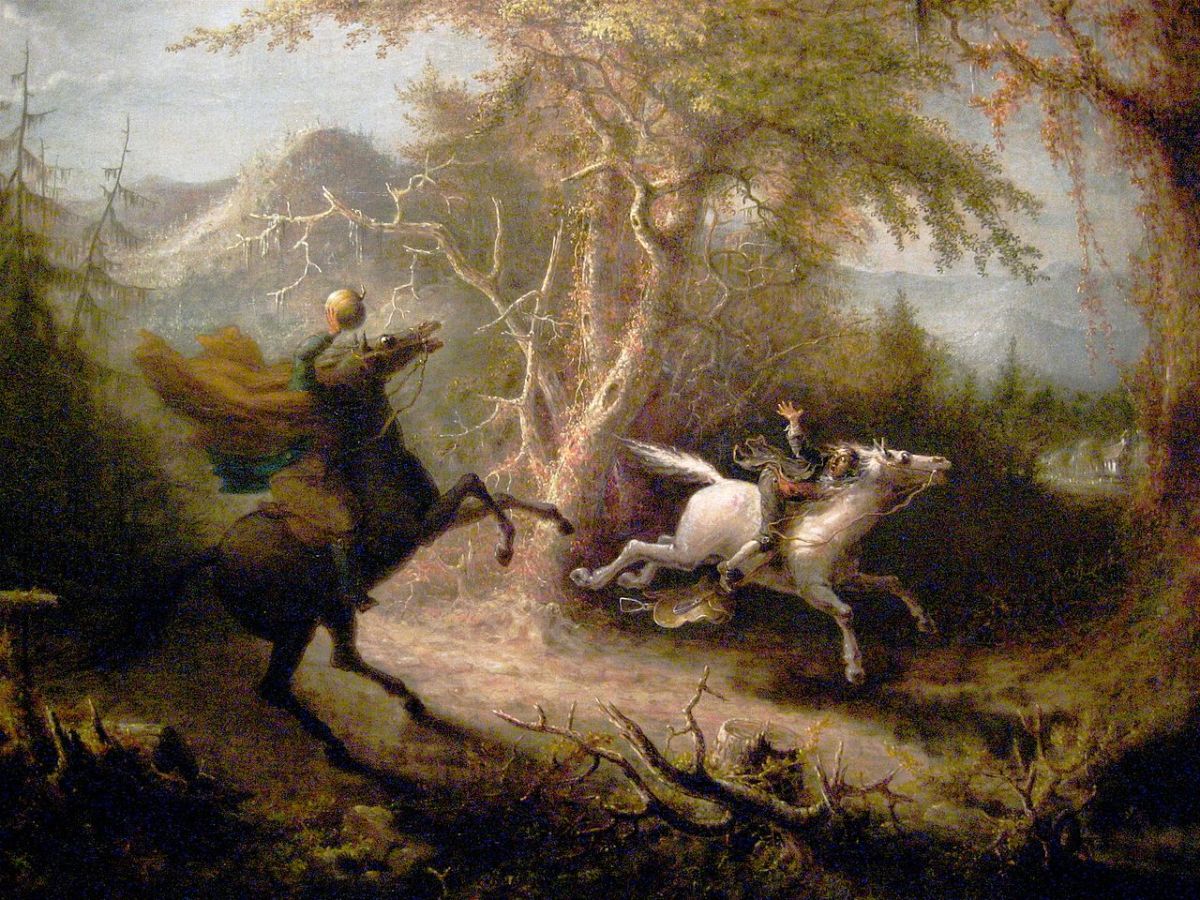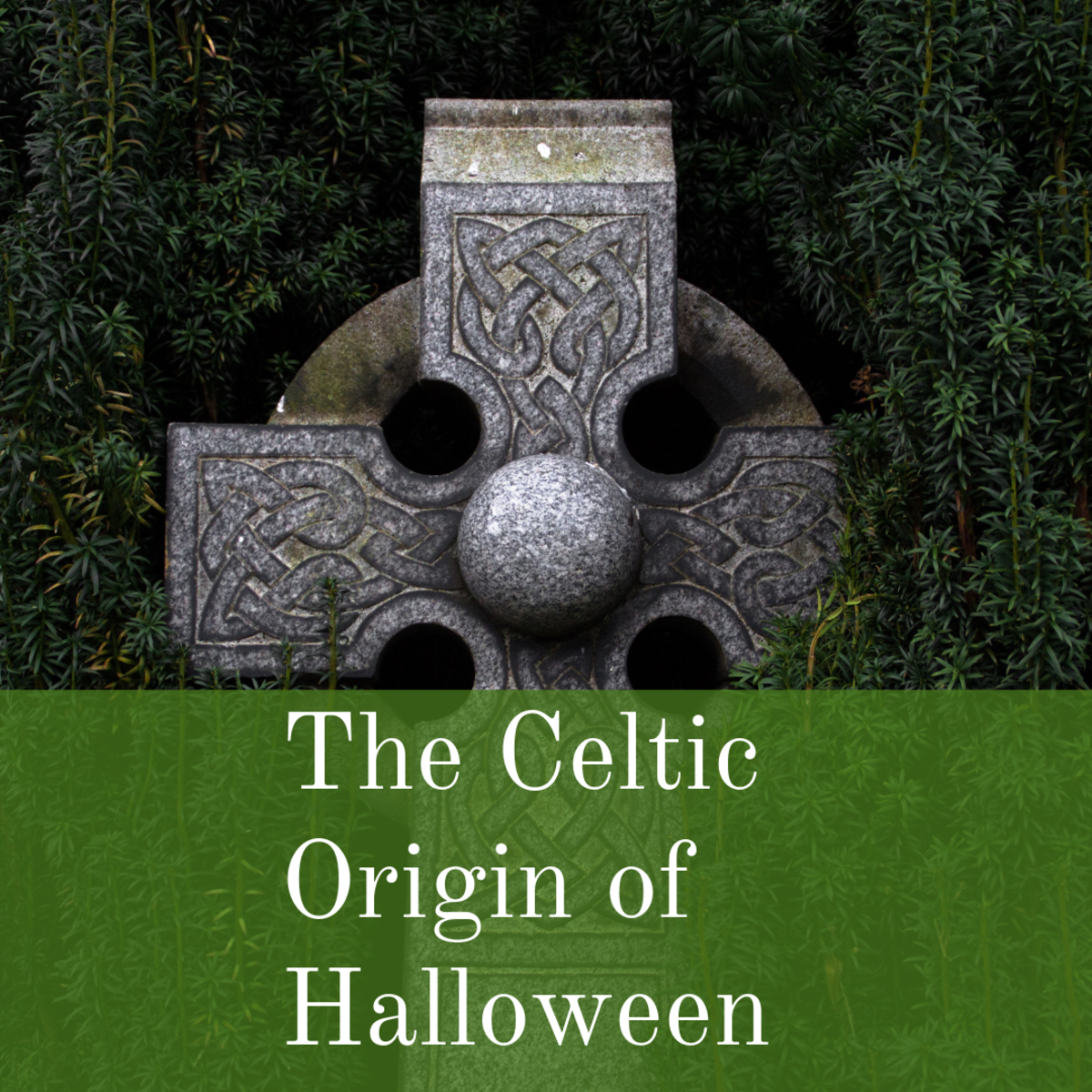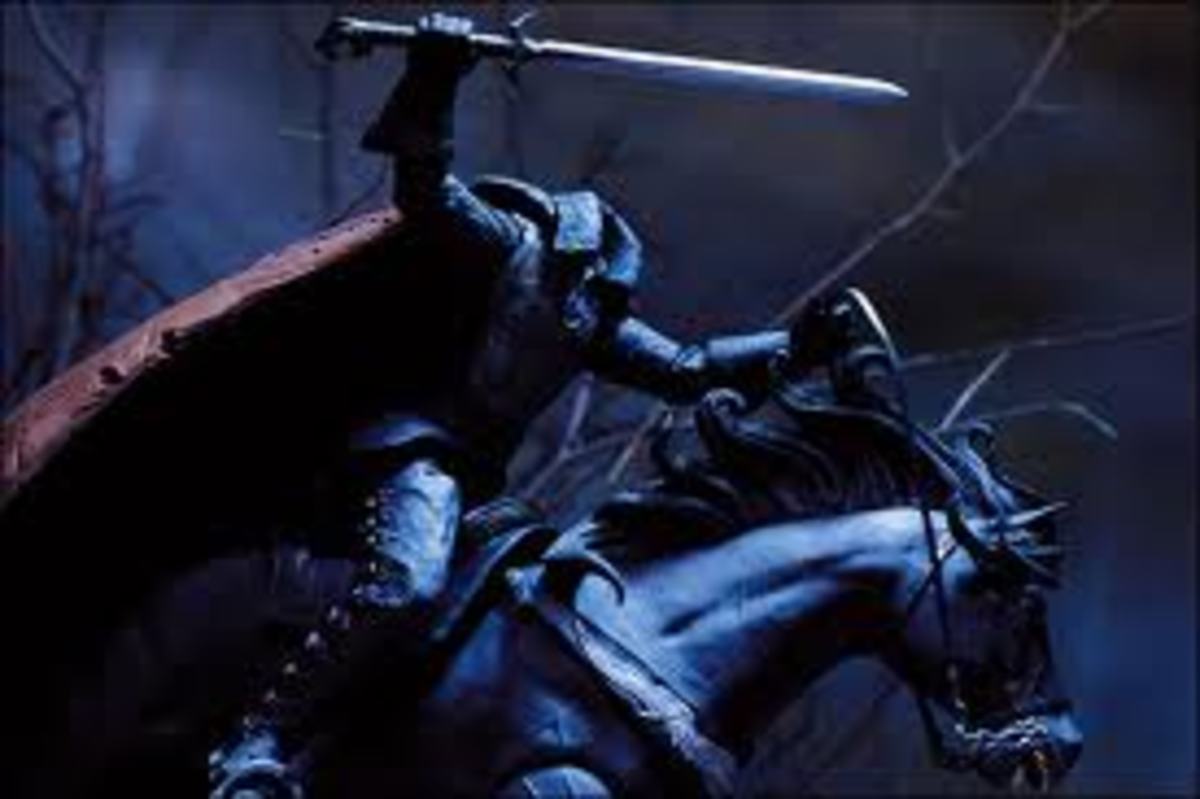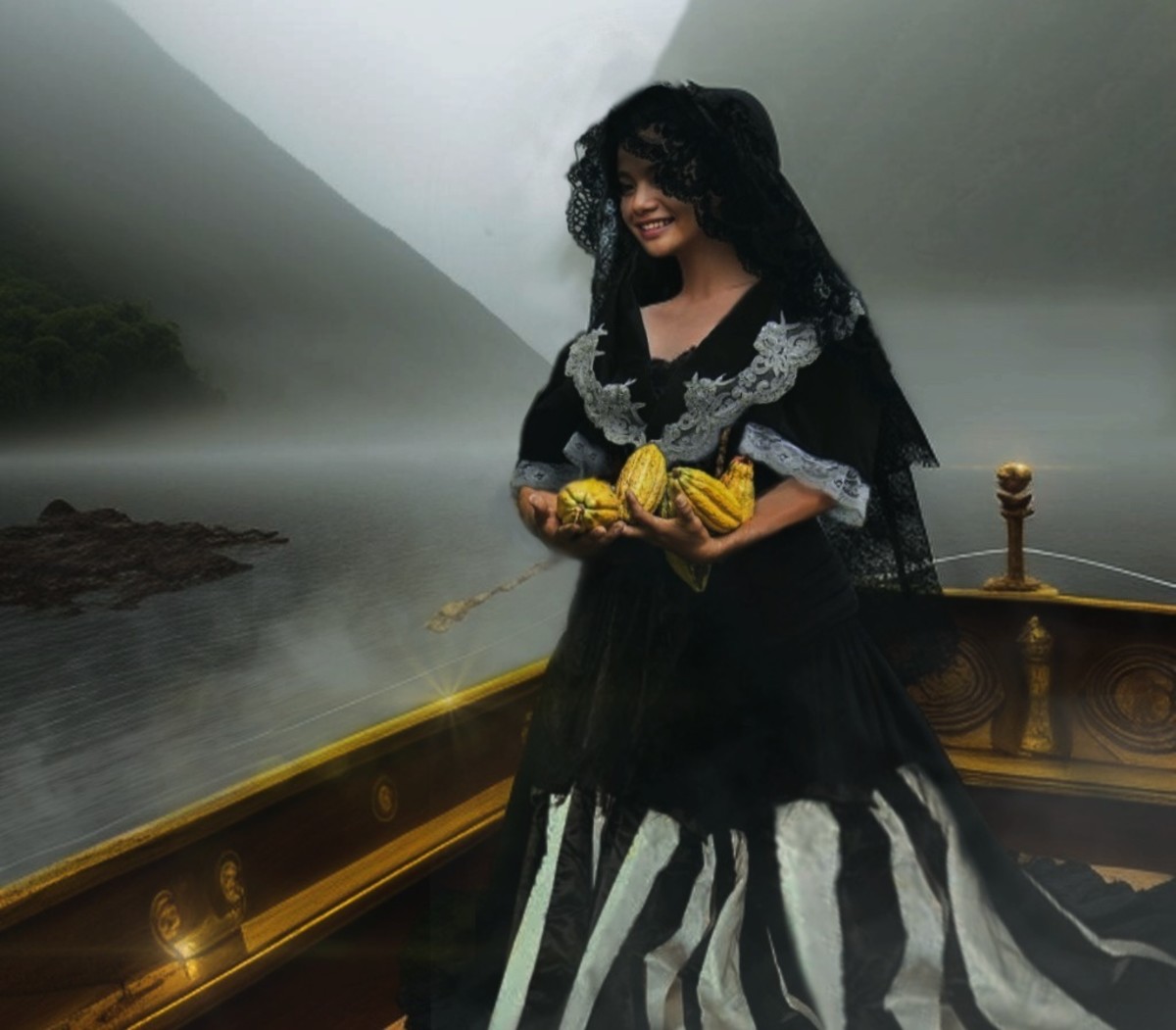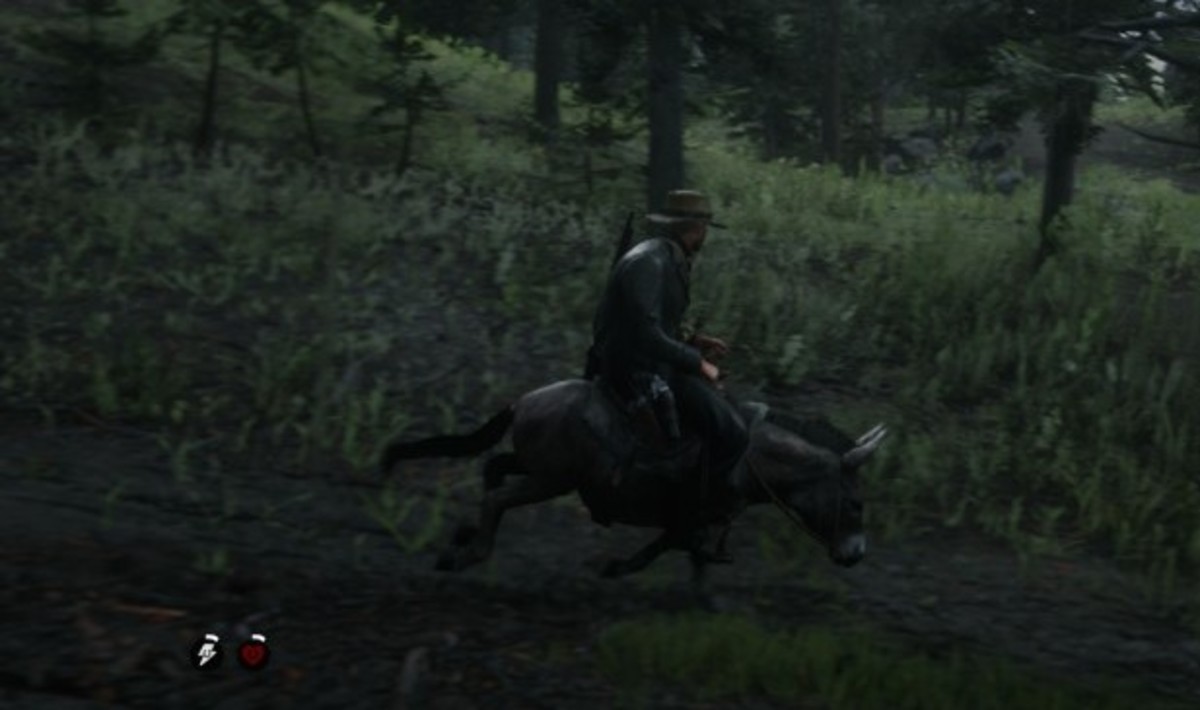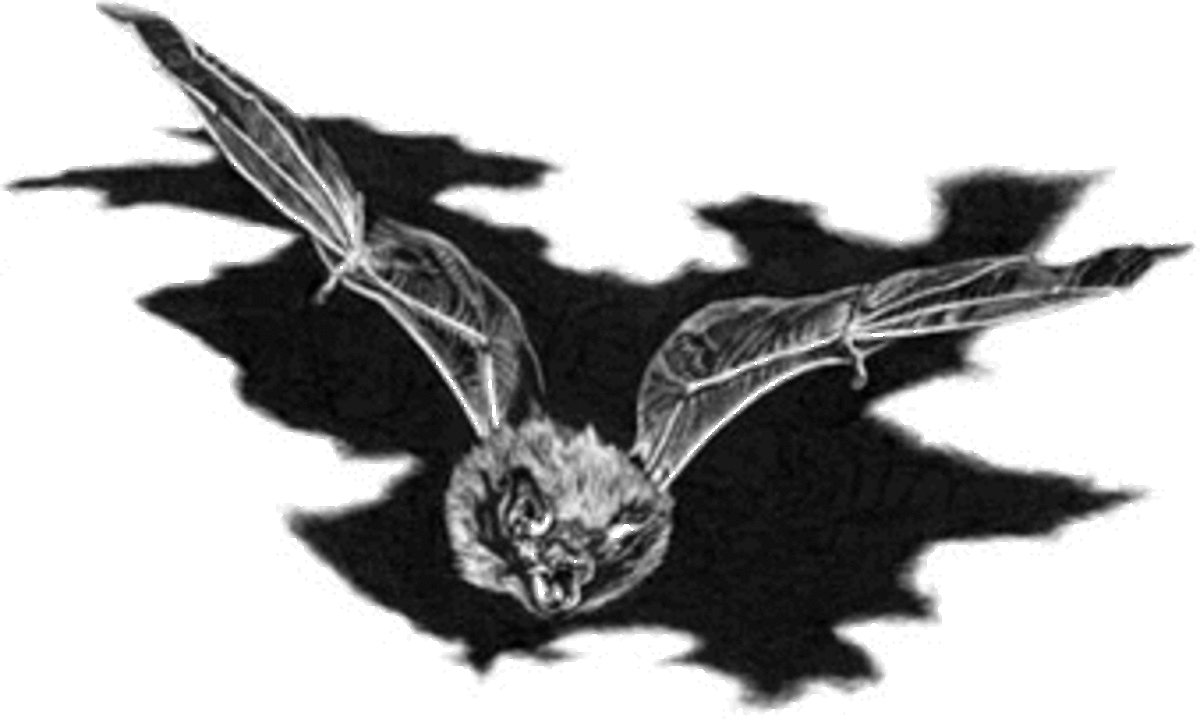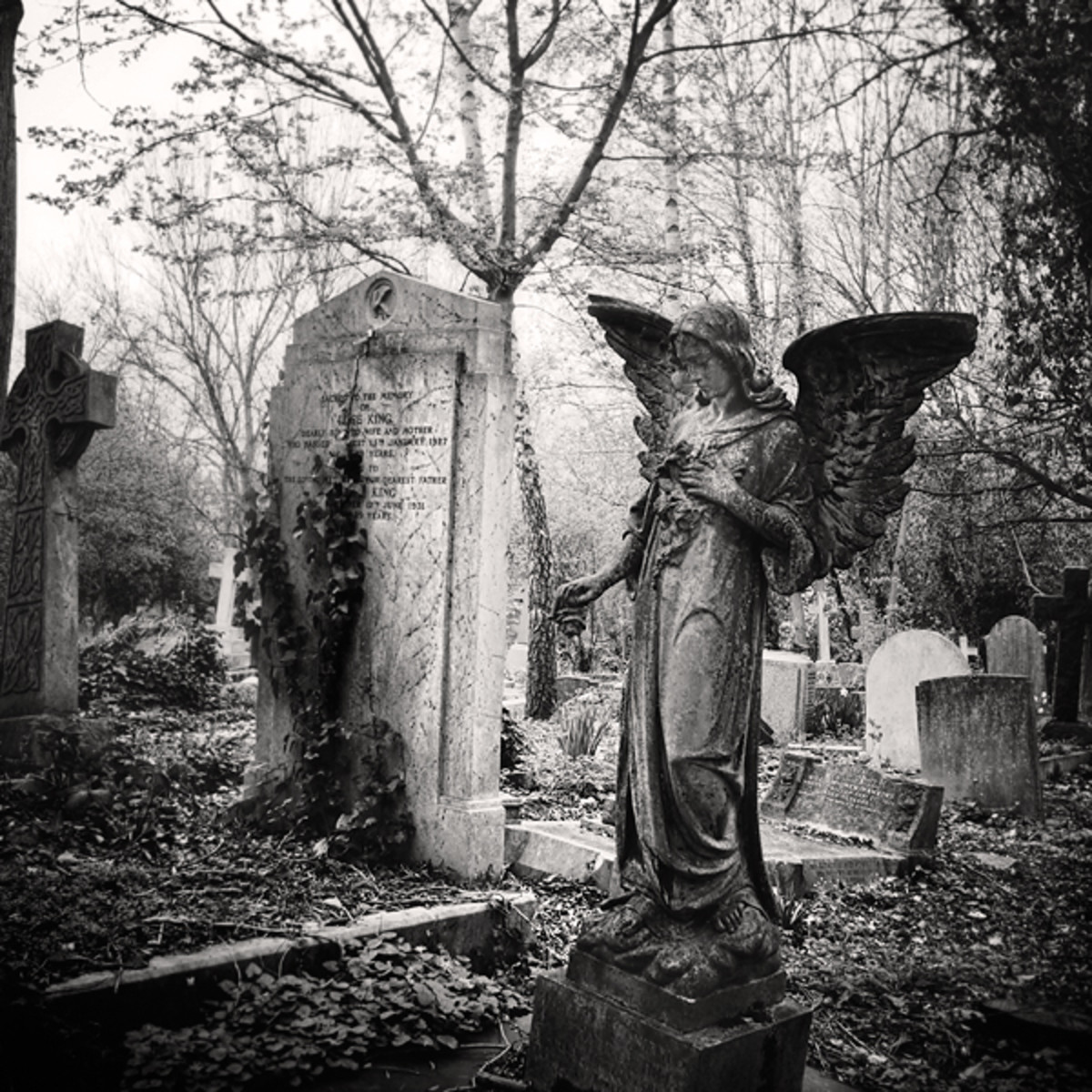Dullahan
Video game - Angry Monk Vs Dullahan
Gan Ceann or Dullahan - and Legend of Sleepy Hollow Similarities
From the plentiful stock of fey figures in Irish culture, there exists a truly impressive (some say bizarre?), unseelie faery called a Dullahan/Gan Ceann (without a head in Irish).
We're perhaps most familiar with a sort of spin-off of the Dullahan, illustrated most clearly in the story The Legend of Sleepy Hollow which has the main character, Ichabod Crane, fleeing from a headless horseman. Washington Irving is responsible for this very chilling and creepy tale, published in 1820) but seems to have borrowed the Dullahan from European sources - the Dullahan being the horseman without a head!
Without digging further into this story, many people will assume that Irving just invented a fantastic character and the headless rider stems from this Irving story and imagination - which is a bit too neat and tidy an explanation, especially for those who really like to dig for the background details of older stories and legends. In fact, in Irving's story, the Headless Horseman used to be a Hessian Soldier (and a type of casualty of war - sad, really) turned to ghost - which might just a tad bit different from the Irish version of a Dullahan.
It seems to me, based on looking on at least a dozen sites, all Irving did was introduce the Hessian soldier, a rather normal man - and transformed the man into a Headless Horseman ghost. Irving's is a ghost story. The entity is made to be more frightening and definitely supernatural by pointed mention that the deceased Hessian - killed in battle - has turned into a ghost. As well, story version has now been embellished on the big screen, in movies and even a scary Hallowe'en time cartoon for kids.
In Irish versions, it seems possible that the creature is and always has been a fairy (could be of smaller stature than a human man) who has always lived without the head on top of its body. Not much information is around to tell whether the separation of head and body is the natural state of the Dullahan or whether, through some event, the Dullahan became decapitated yet stays animated to wander around without its head and body attached together properly.
Although this might not seem an important detail to most story listeners, for those who research on legends, important questions may arise concerning the Dullahan entity such as, "was the Dullahan once in one piece?" The answer, according to different regions of the globe, may tell something sociologically and even historically about the population who tell this legend. As well, if the Dullahan's head and body were once attached, then when the Dullahan is in two pieces, it might indicate something in a particular culture that people feel strongly about, a discretion, failure, transgression of law that is treated as punishable by severe methods, etc. For example, if the Dullahan was once in one piece but was decapitated for a crime, this would send a clear message out to a society who tells this story - that the crime is not acceptable. It is even possible that the beheaded man background is a remnant of days when something like infidelity was punishable by death by decapitation. This detail may have stuck with us in story version as the laws for society have changed over hundreds of years.
Again - people just wishing to enjoy an exciting scary story probably don't need to know "WHY" the Dullahan is headless but I'm interested in these sort of details because I think they give a special insight into cultures from long ago. Of course, some details will always be speculative or best guesses but it's interesting, to me, to explore as many cultural possibilities as possible.
Irving's Headless Horseman, at first glance, appears to have a different purpose than the Dullahan from old Irish lore. Irving's character seems to be a lone headless rider that hangs out near cemeteries and preys upon unsuspecting travellers - almost like a highwayman without a head. In Irish lore, it seems the Dullahan has a more specific role, much like a Banshee - to identify and mark a person who is about to die. In some legends, the Dullahan travels WITH a Banshee, so they are almost like a "Death Alert Team" or something.
In the most recent movie, The Legend of Sleepy Hollow, (yes, the one featuring Johnny Depp) the Headless Horseman was once a cruel, blood hungry soldier and the person who knows the most about this creature is an equally cruel and very twisted witch, so the supernatural and magic surrounding this undead creature immediately veers from Irish lore making the undead's purpose different than the death alert/Banshee cousin purpose. I can't say more without giving away the plot of the movie but LATE IN THE FILM, we find out a surprise about the Headless Horseman that actually places this creature back outside of Irish Lore and makes the figure anything but a Dullahan. As mentioned already - Washington Irving BORROWED the Dullahan from other lore and then created a GHOST STORY out of whatever sources first got his imagination running wild. The movie takes Irving's trend of creativity and alteration even further so that by two thirds of the way through the movie, we won't even be thinking about any sort of Irish Dullahan as the movie nears to its final scenes.
With a little searching on the internet, we can find legends which adhere somewhat to Irving's decapitated fellow and act something like a highwayman - with bad intent upon those who come too near to it. We may fear this type of Dullahan more because the attacks on unsuspecting passersby will be more random (and Dullihan versus the victim) while the "Death Warning/Alert" Dullahan - and Banshee - can sometimes be considered as merely messengers (nature/fate versus the victim, with Dullahan simply delivering the warning). The dynamics of different motives/purposes of Dullahan can be interesting, telling about the fears, truths, constructs and superstitions of a population who tell tales about these creatures.
Predator (highwayman) - Unlucky soldier/man (Irving's) or messenger (more traditional Dullahan)? Which do you think?
Which Dullahan explanation is most fitting?
Well, the best explanation for the Dullahan is:
Legend of Sleepy Hollow - Church Scene
Washington Irving's First Mention of The Headless Horseman
In Washington Irving's The Legend of Sleepy Hollow, the story begins like modern day "found footage" video movies. It's as if someone - a Narrator - came across the journal of a guy who wrote an account of his experiences with a place and people within the place of Sleepy Hollow, a fright from a Headless Horseman, etc. Interesting and effective start to the tale - with techniques perfect for spreading this story - any speaker can pick up on this technique and re-tell the tale!
Free online version to read: Legend of Sleepy Hollow/Washington Irving.
The description of the Dullahan comes along early in the text on page 7:
"The dominant spirit, however, that haunts this enchanted region, and
seems to be commander-in-chief of all the powers of the air, is the
apparition of a figure on horseback without a head. It is said by some to be
the ghost of a Hessian trooper, whose head had been carried away by a
cannon-ball, in some nameless battle during the revolutionary war; and
who is ever and anon seen by the country folk, hurrying along in the gloom
of night, as if on the wings of the wind. His haunts are not confined to the
valley, but extend at times to the adjacent roads, and especially to the
vicinity of a church at no great distance. Indeed, certain of the most
authentic historians of those parts, who have been careful in collecting and
collating the floating facts concerning this spectre, allege that the body of
the trooper having been buried in the churchyard, the ghost rides forth to
the scene of battle in nightly quest of his head; and that the rushing speed
with which he sometimes passes along the Hollow, like a midnight blast, is
owing to his being belated, and in a hurry to get back to the churchyard
before daybreak.
Such is the general purport of this legendary superstition, which has
furnished materials for many a wild story in that region of shadows; and
the spectre is known, at all the country firesides, by the name of the
Headless Horseman of Sleepy Hollow."
If you're interested in the full story, you can easily find a legal, free version of this story available for download by doing a simple google search on title and author. You can definitely find this at the gutenberg .org site.
**NOTE: The write up on Wikipedia states that the Washington Irving story is borrowed from Old German Lore (hence, use of the Hessian soldier), however, if Irving was dealing with the lore from stories such as the Grimm brothers circulated, there are two main pieces of lore/legend or story that the Grimms recorded. One is a Huntsman who delivers warnings to those who should avoid accidents and possible death by delaying their hunt or canceling their hunting trip. One is of a woman gathering acorns in the forest who hears a hunting horn then looks up and sees a headless man sitting on a grey horse. Again, this seems to be a Huntsman and might be related to the first reference.
I'm not disputing that Irving used what was known of German tales at the time when writing his story - I'm just prompting readers to realize that Lore is dynamic and not static. Likely Germans made good use of some Irish tales in earlier centuries (The Huntsman lore seems to be more recent than older Irish tales of the Dullahan) and likely Irving picked up the Huntsman tales and then further embellished, and Americanized some tales - creating his Headless Horseman to terrorize Ichabod Crane in regions around what would be a very new New York in a very new America.
Locations of Ireland and Germany
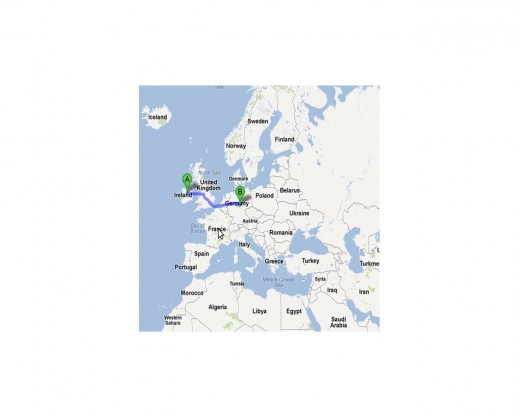
Back to Irish Lore
On many Irish Lore fan sites, in story and lore forums, I've found that whenever someone tries to explain why the Dullahan exists as a decapitated horseman, they either run up short on details or somehow, the Americanized Dullahan made popular by Irving seeps into tales and explanations.
I'll trust when most sources simply say, "Nobody knows the origin of the Dullahan" or how it came to exist without head and body aligned, yet animated and dreadful to all - rather than go with Irving's type of headless horseman because Irving has drastically altered the character.
On the Irish Culture and Customs website the viewpoint is that the Irish collectively say they don't know the origins of this entity but do have a lot of knowledge about what happens if the Dullahan shows up in your town, on your street, on the roadway you're travelling. Also, there are explanations here which tell the difference between a Banshee and Dullahan and the effects of having one or the other appear near you.
The Banshee is primarily considered an entity that warns that death is going to arrive and claim someone. The Dullahan seems to not only get more specific but to also have some agency to SELECT that someone will die. Though most people fear the Banshee, the fear of death is projected onto the Banshee as messenger of the death warning. Most who are aware of the Banshee legends say there are a few ways to avoid death if a Banshee comes near to you and a few say you can't avoid the message this messenger brings.
By contrast, when considering the headless entity, it is said that if you are not careful, a Dullahan will actually select YOU to die next. To avoid being selected, it is important to basically FLEE from the Dullahan as soon as you are aware it is near you, and you definitely should not stand around gawking at his headless form or else he can catch you off guard, toss a bucket of blood at you and it's game over for you. If the blood hits you, there is no way for you to escape being the next dead person in town, your neighborhood, by the side of the road, etc. Death is said to strike very quickly, so once struck by blood, you have absolutely no chance to escape and will likely be dead within seconds - at the most a couple of minutes.
Also, the Banshee seems to have internal instructions to seek out and visit the person's home where fate has knowledge that a person will die - perhaps an entity or force of fate is the direct puppeteer of the Banshee, guiding this often screaming entity. Often, the Banshee will arrive at isolated farm houses and out of the way places. The Dullahan more often enters public spaces and may have internal instructions of who to approach regarding their demise but if someone is caught off guard and gets hit with a bucket of blood, they will most certainly die next. The Banshee's message is most feared but with the Dullahan both the message and messenger are feared. It seems likely that the Dullahan can act of his own agency some of the time whereas it is believed the Banshee is never controlling where she goes or who she selects. BIG TIP: Don't annoy a Dullahan 'cos it WILL throw its bucket of blood at you and you will be next dead. The Dullahan can be provoked... in this, it is likely that someone can alter who is supposed to die if ever anyone is brave (or crazy?) enough to step in the pathway of the entity and accept the bucket of blood to save another that death was searching for to take.
It is said that the only possible defense against the Dullahan (besides someone else's heroic sacrifice) is that it cannot tolerate the presence of Gold. Being prepared to throw a large gold coin or solid gold object in the pathway of a Dullahan may put it off your tracks so that you can run away. Of course, this technique would require actually getting fairly close to the Dullahan so you'd better not get caught in the spray of blood from his bucket of blood.
One bit of lore says a man was on his way home and a Dullahan ended up behind him. While the man still had hit wits about him, knowing he couldn't outrun the Dullahan, he remembered he still had a slim chance of surviving if he could outsmart the creature. He quickly dropped a large, gold coin in front of him between himself and the Dullahan and then crouched to cover his head, expecting a spray of blood or worse - instant death...he heard the fierce growl of the Dullahan and the horse's hoofbeats halt for a second, then the horse's galloping noise move away. The man waited until he heard something close to silence before opening his eyes and then - finding himself in one piece - took the opportunity to run all the way home before the Dullahan might find reason to return. It is said that the gold put the Dullahan completely off delivering his Death Alert to the man...
The Dullahan of Irish lore is also often associated with a very specific wagon and whip, along with black horse, black clothing, but is not always said to be a lone rider on a single horse (as in the Irving version). If a driver of a wagon team, the wagon/carriage or coach is said to be propelled by six black horses and the Dullahan urges them along with a whip fashioned out of a human spine. When in motion, team moves so fast that the friction of the wagon wheels on the ground sets any nearby grasses and hedges on fire along the side of the roadway.
The Dullahan carries his head in his hands or, when not in a coach/carriage and instead on horseback, sometimes his head is set upon the saddle pommel. Despite having its head and body separated, the Dullahan can speak - however, you really wouldn't be interested in hearing it speak because it is said the entity can only utter one word at a time...
The one word will be a single name.
The name will be the person targeted for death - so this is why one would not wish to hear a Dullahan speak.
It might be YOUR name the creature yells out!
It is not possible to block the pathway of the Dullahan. Even if you lock your gates, they will swing open and free at the Dullahan's approach. Locks on doors or gates will not keep the Dullahan from entering property or buildings, meetings halls, etc - with the exception, in a few cases (and in the Movie version) of the gated premises of a church yard and the church building itself. However, the Dullahan's whip and bucket of blood can reach the interior of sacred spaces so if you use a church for protection, you must get right inside the building and stay away from the door, windows and such or you still can be marked for death.
As well, if the Dullahan calls out your name - it doesn't matter whether you're in the church, sacred space or on sacred ground... if you are within earshot, you're doomed.
I haven't found anything yet that tells me that a person might not be saved by not recognizing and not hearing the name shouted. For instance, if the Dullahan's shouted one word/name is entirely drowned out by other noises, by singing or something, I think it might be possible to escape death if it was your name called out - so long as you also did not get splattered by blood from the Dullahan's bucket of blood... just my own musings. I haven't found anything to back this idea - it's just my own imagination at work here. I mean, I thought, while researching, "What if a person is deaf and cannot hear the Dullahan shout? And if that person also is not in the way of the blood, maybe the person can survive an appearance of the Dullahan, right?"
